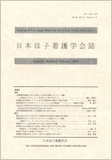Japanese
English
- 有料閲覧
- Abstract 文献概要
- 参考文献 Reference
目的
20代の子宮がん検診受診行動とコンジョイント分析による検診環境要件とその意向を明らかにした。
方法
調査は関東圏1都5県に在住する20歳代の未婚女性を対象として、インターネット調査を実施した。調査内容は、子宮がん検診受診率や検診動機、未受診者の未受診理由、健康情報の活用に関わるヘルスリテラシーHealth Literacy(以下、HL)と検診受診率との関係、コンジョイント分析による5つの検診環境要件と8プロファイルへの検診意向などであった。
結果
対象の平均年齢は25.4(SD±2.7)歳、過去2年間の検診受診率は27.3%、1年1回が33.3%と最も多く、無料クーポン券の利用者は48.3%、検診結果は91.0%に異常なく、市町村からの受診勧奨33.7%、自発的受診23.0%が検診動機の半数を占めた。未受診者の52.8%は無料クーポン券を知らず、未受診理由は検診方法がわからない21.5%、婦人科検診への抵抗21.0%、検診台の恐怖19.5%などであった。HL2下位尺度との関係はいずれも有意差(F=15.94、p=.000;F=9.81、p=.002)を認め、検診受診者の方がHLは良好であった。5つの検診環境要件に対する8つのプロファイルの提案には「検診費無料」「日曜日」「待ち時間60分以内」「女性医師」「総合病院」が最も支持された組み合わせであった。
結論
インターネット調査による対象集団は、検診受診率が高い集団特性の可能性を示唆した。無料クーポン券の存在を認知すれば利用する可能性は高く、コンジョイント分析においても検診無料は検診意向の選択を高め、検診曜日や検診時間帯の意向は待ち時間の許容範囲を変動させる要素であることを示唆し、検診受診行動にはHLの良好さが関与した。
Objective
This study was conducted to (1) elucidate the behavior of women in their twenties for uterus cancer screening and (2) analyze the expected screening environmental factors by conjoint analysis.
Methods
An internet survey was conducted on single women in their twenties living in Tokyo and five adjacent prefectures to investigate the uterus cancer screening rate, motives for screening, reasons for not undergoing the screening, a relationship between health literacy ("HL") for use of health information and the screening rate, and their preference on the screening environment revealed by conjoint analysis of eight profile patterns composed in different combinations of elements for each of five environmental factors.
Results
The mean age of the subjects was 25.4(SD±2.7) years and the rate of those who had undergone a cervical cancer screening test ("the screening") during the latest two years was 27.3%. As for the frequency, "once a year" was the most popular as seen in 33.3% of the subjects. A public free-coupon was utilized by 48.3% of the subjects. No clinical abnormalities were found in 91.0%. For motives for the screening, "recommendation by municipal government" was seen in 33.7% and "self-motivated" in 23.0%. Of those who had not undergone the screening, 52.8% were ignorant about a public free-coupon. The reasons for not undergoing the screening were "ignorance about how to apply for the screening" in 21.5%, "resistance to gynecological examinations" in 21.0% and "fear of an examination table" in 19.5%. As for assessment with the HL scale composed of two subscales, the score in women who had undergone the screening was higher (meaning a higher HL level) than those who had not, and significant differences were observed (F=15.94, p<.000 ; F=9.81, p<.01). The most favored profile pattern was a combination of "free screening fee", "Sunday", "waiting time of less than 60 minutes", "female doctor" and "general hospital".
Conclusions
The subjects of this internet survey were supposed to have a group characteristic of a higher screening rate. There is a possibility that if more women would know of a public free-coupon more women will use the coupon. The conjoint analysis suggested that charge-free screening will boost their willingness for the screening. The analysis also suggested that the preferable screening day of week and time are the factors to alter their acceptable range of waiting time. Their behavior for the screening was associated with HL levels.
Copyright © 2016, The Japan Maternal and Infant Caring Association All rights reserved.


